How to Access and Submit Your BigCommerce Sitemap to Google
How much do you know about search engine optimization (SEO)?
Most people in the e-commerce community have at least heard of this term before, and they know it has something to do with adding keywords to their content in order to rank higher in search results.
But if that’s all you know, you should take some time to study up on this subject. SEO has an enormous impact on the success of your online store. According to Backlinko, 44% of traffic to e-commerce sites comes from organic searches.
In addition to that stat, consider the fact that 61.5% of the traffic from a search engine results page (SERP) goes to the top three search results.
Now, you can surely see why it’s important for your online store to rank highly on SERPs that are relevant to your industry.
If you want to beat your competitors and rise to the top of the search rankings, you need to pay attention to more than just keywords. There are many other factors at play here, such as your sitemap.
Create customized pages in BigCommerce with ShogunBuild dynamic pages that convert shoppers into customers. Get started now
What is a BigCommerce Sitemap?
Before we explain what your sitemap is, we need to go over how a search engine like Google works.
Google uses software called Googlebot to “crawl” the internet, which means that it’s constantly following links from known pages so that it can discover new pages to add to its database.
When Google finds a new page, it will analyze the page to determine what it’s about and how it might be relevant to search queries. This process is known as “indexing”, and it will determine whether or not your store is featured on SERPs.
So, for a page to show up in SERPs, it first must be indexed. And for a page to be indexed, it first must be crawled.
For most sites, you don’t need to do anything on your end for your site to be crawled by Google. But for sites with a large number of pages, such as online stores, there’s a decent chance that Googlebot will not completely crawl your site.
That’s why it’s recommended that BigCommerce stores submit their sitemap to Google Search Console.
Your BigCommerce sitemap is a list containing the URLs of your pages. It serves as a blueprint for search engines, telling them what’s available on your site and how each page can be reached.
When crawling the frontend of your site, Googlebot might need to jump through multiple links to access certain pages. This is how some pages can get missed when Googlebot is crawling a large site. But with a sitemap, Google can access all your pages from the same place.

In this guide, we’ll review how to access your BigCommerce sitemap and how to submit your sitemap to Google, as well as some other practices that will help you improve SEO.
How to Access Your BigCommerce Sitemap
To access your BigCommerce sitemap, all you need to do is add “/xmlsitemap.php” to the URL of your BigCommerce store (the entire URL of your BigCommerce sitemap would look like “yourstoredomain.com/xmlsitemap.php”).
Going to that URL will take you to a page like this:
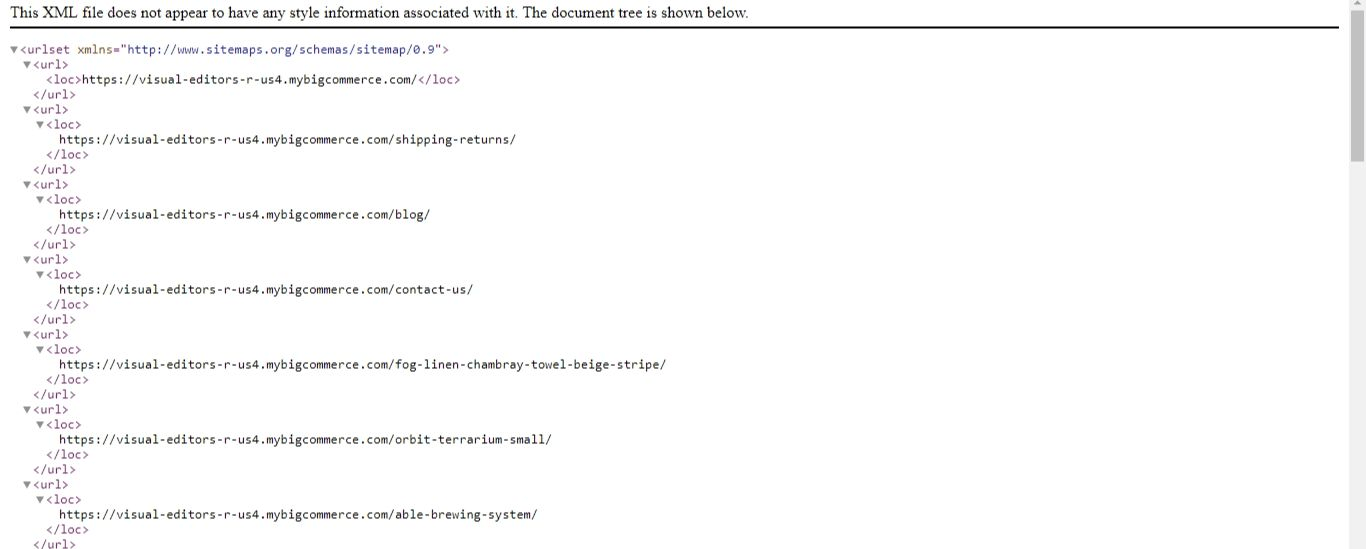
How to Submit Your Sitemap to Google
To submit your sitemap to Google, just follow these steps:
1. Log in to Google Search Console and select “Sitemaps” (if you have multiple sites attached to your Google Search Console account, make sure you have the right site selected).
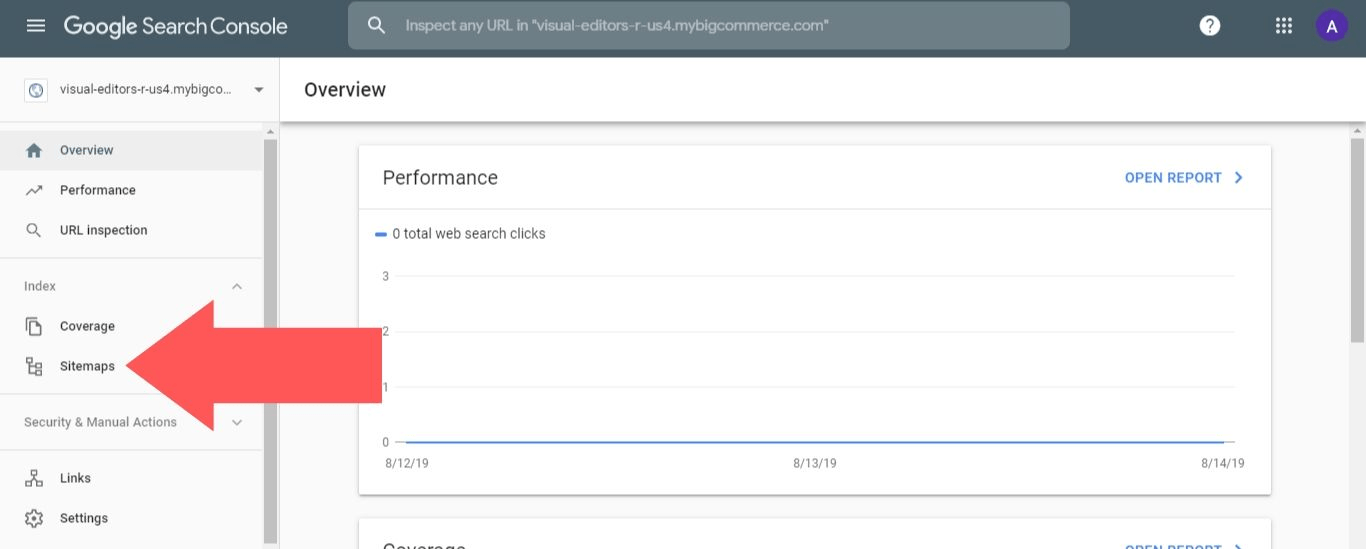
2. Enter your BigCommerce sitemap URL in the “Add a new sitemap” field and select “Submit”.
Note that because of a Google Search Console bug, your status may read as “Couldn’t fetch” when it should really be “Pending”. In that case, you’ll need to wait a couple days to see if the status changes to “Success” before you know whether or not you have a problem.
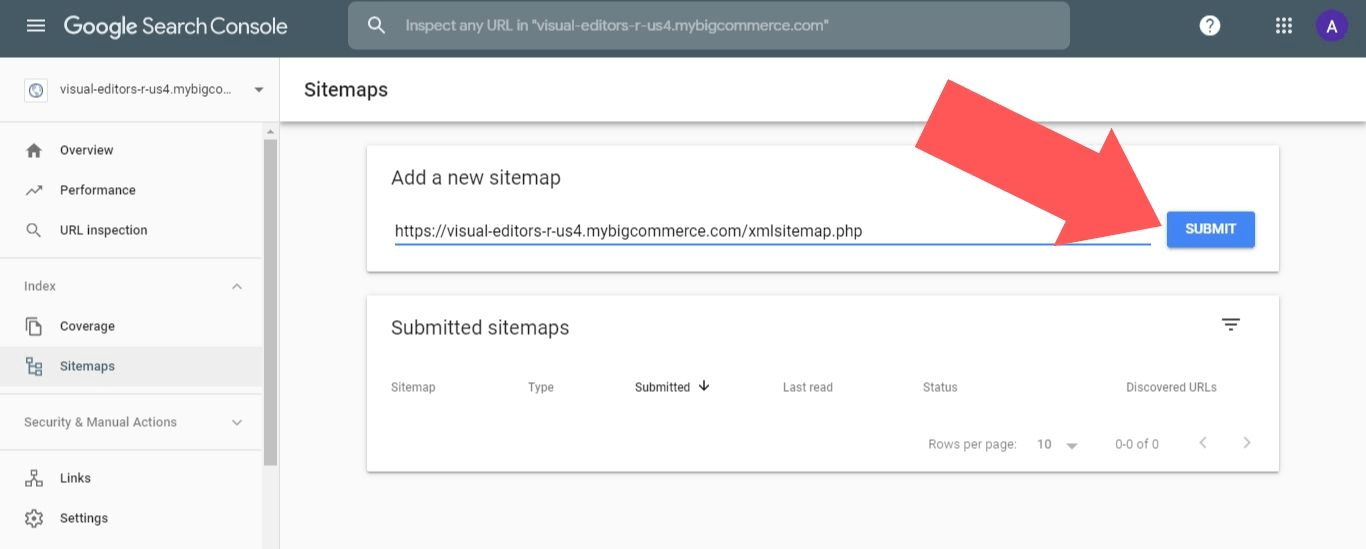
3. It’s recommended that you replace your sitemap whenever there are significant changes made to your store, such as a mass upload or deletion of hundreds of products/pages. Small changes to your store do not warrant a sitemap replacement.
To replace your sitemap, first click on the outdated sitemap in the “Submitted sitemaps” section.
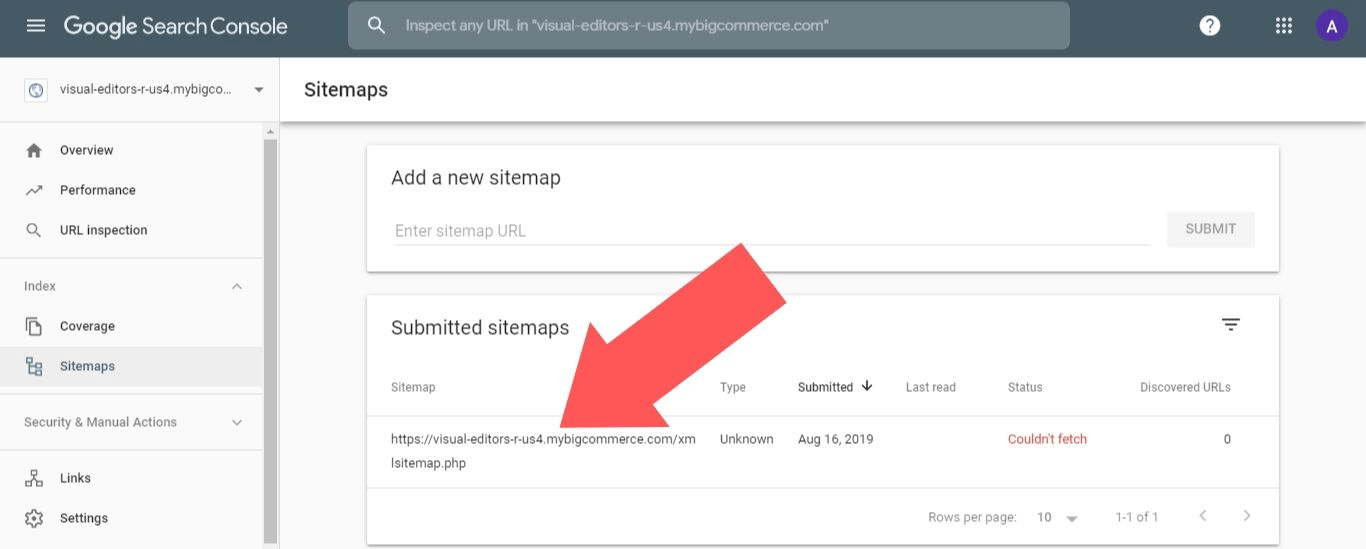
4. Click on the three vertical dots icon in the top-right corner of the screen.
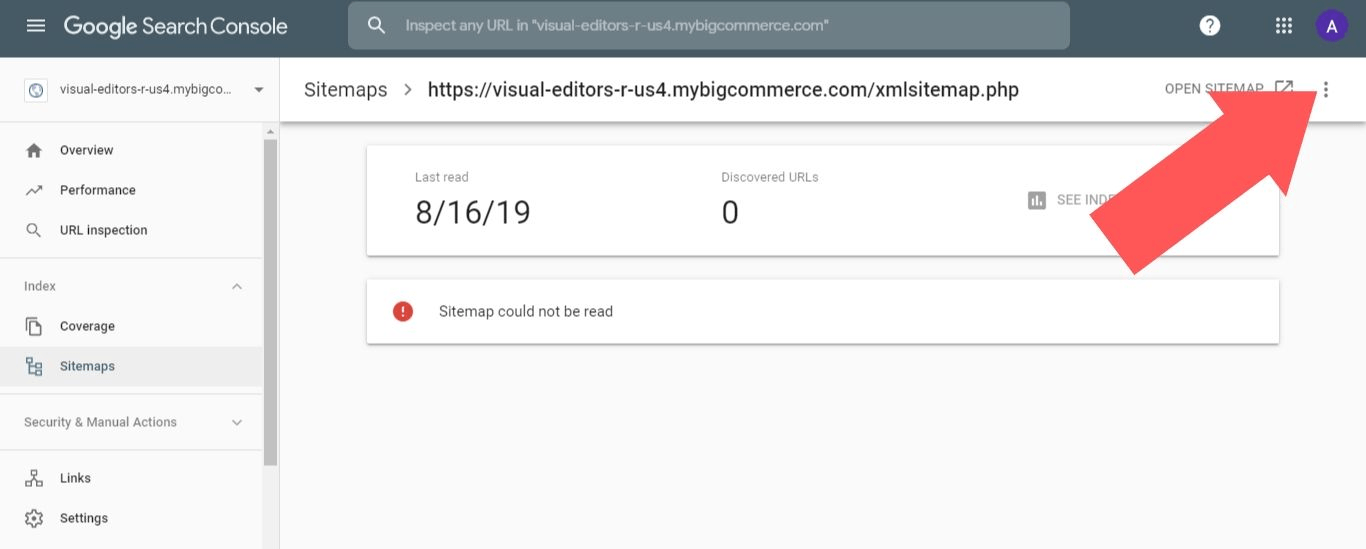
5. Select “Remove sitemap”.
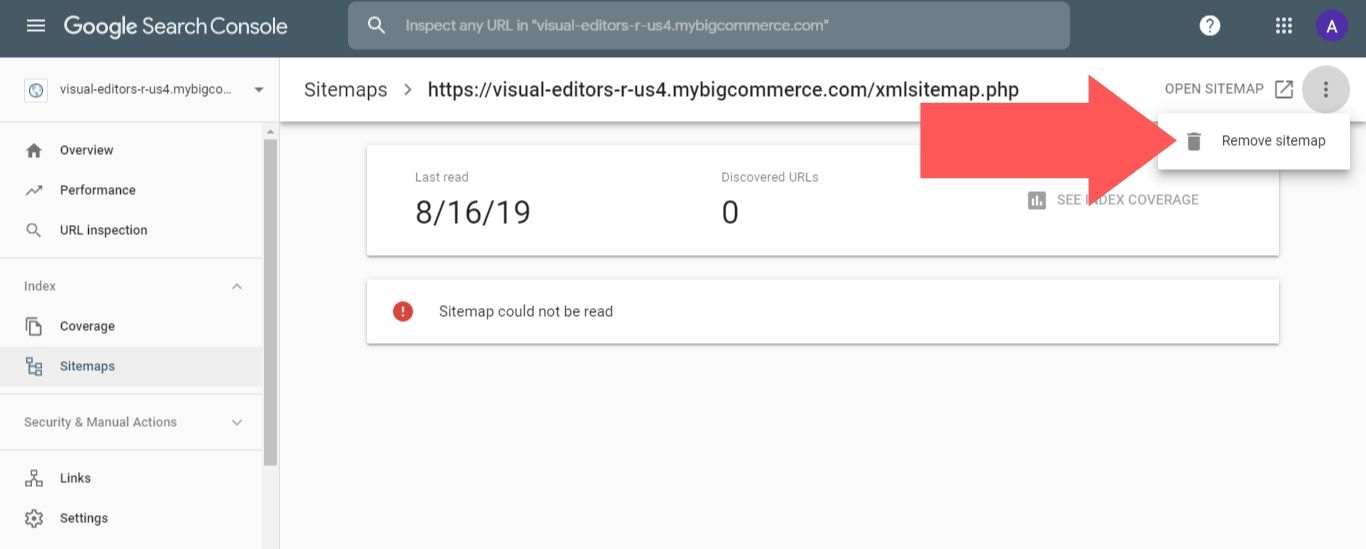
Once the outdated sitemap is removed, use the process described in the first two steps of these instructions to add the new sitemap and complete the replacement.
How to Stop Google from Crawling Non-Relevant Pages
There are two types of pages on your store: pages that you want people to discover through search engines (your homepage, product pages, etc.) and pages that aren’t relevant to search engines (instructions for retrieving a lost password, return policy details, etc.).
You shouldn’t allow Google to crawl pages that aren’t relevant to search engines, as this is bad for SEO.
According to Moz, the pages that Google picks up for your site through crawling will be used to determine the overall quality of your site. The better your overall quality, the higher you will rank on SERPs.
Ideally, the pages you want to be discovered through search engines are high-quality, in that they have a decent amount of content on them, they have other sites linking back to them, and they check off all the other boxes for SEO.
The pages that aren’t relevant to search engines likely aren’t going to check off those SEO boxes, because they just weren’t made for that purpose.
If both of these types of pages are crawled by Google, it’s going to hurt your overall quality rating. Conversely, if you stop Google from crawling your non-relevant pages, your overall quality rating will rise and you’ll gain an advantage over your competitors on SERPs.
Here’s how you can use the Robot.txt file of your BigCommerce store to stop Google from crawling pages that aren’t relevant to search engines:
1. From the BigCommerce dashboard, select “Store Setup”.
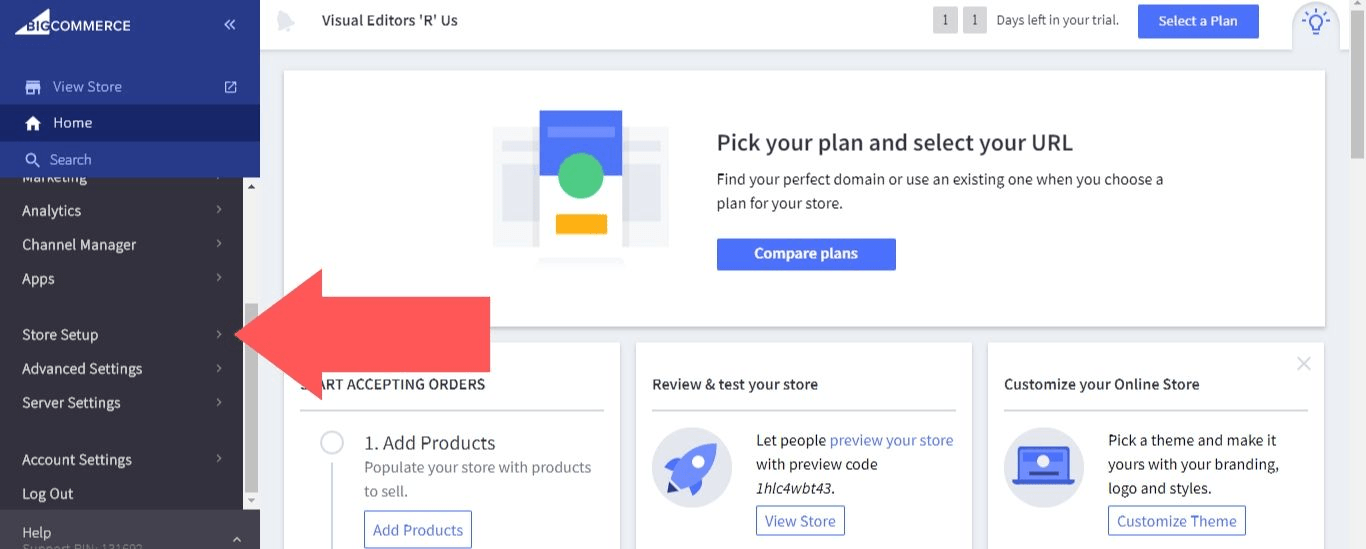
2. Select “Store Settings”.
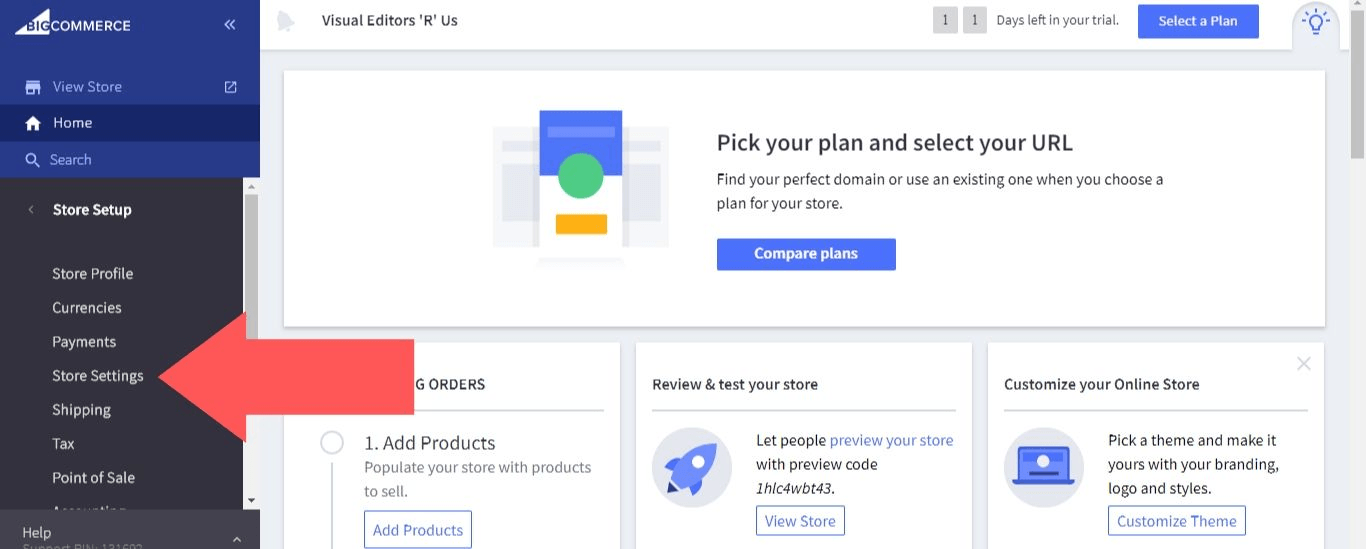
3. In the “Website” tab, scroll down to the “Search Engine Robots” section. You’ll see that several of your pages are hidden from Googlebot by default. To add a new page to this list, type “Disallow:” and enter the URL of the page (for example, the line would read something like “Disallow: /lostpassword.php”).
When you’re done, select “Save”.
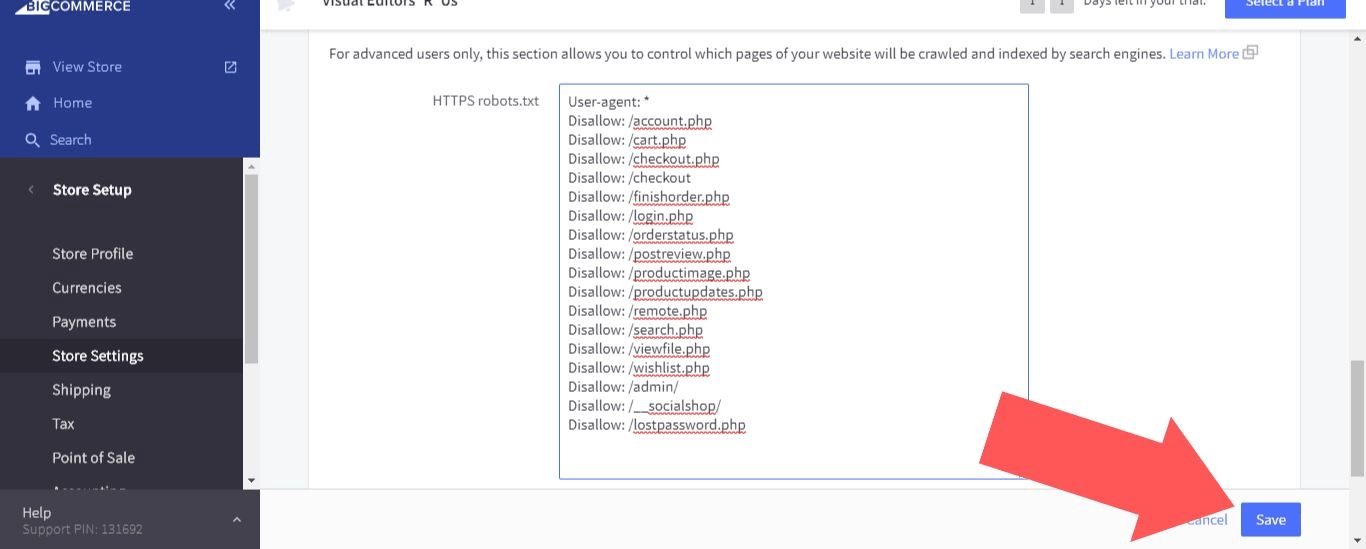
Create customized pages in BigCommerce with ShogunBuild dynamic pages that convert shoppers into customers. Get started now
The Shogun Page Builder App Improves SEO
Shogun is a page builder tool for BigCommerce that allows you to create high-quality homepages, product pages, and everything else your online store needs to succeed. By using Shogun instead of hiring help, your business can save thousands of dollars.
And that’s not all Shogun can do for you. In addition to helping you build pages, Shogun has many features that will improve SEO for your BigCommerce store, such as:
Image Compression
Your site needs to load fast if you want to rank highly on SERPs, as the average visitor is only going to wait a few seconds for your page to load before they back out and try one of their other options. If you can count to four before your page loads, then you’ve got a problem.
When someone lands on one of your pages from a SERP but backs out before clicking through to another page of your site, that’s known as a “bounce”.
Google wants their users to be satisfied with the results that are displayed on SERPs. If your page is getting a lot of bounces, they’re going to take that as a sign that people aren’t happy with what they’re seeing, and they will subsequently lower the ranking of your page.
The images on your pages are automatically compressed with Shogun, which results in faster load times and higher search rankings.
Also, with the Pro version of Shogun, you can customize the level of image resolution according to your needs.
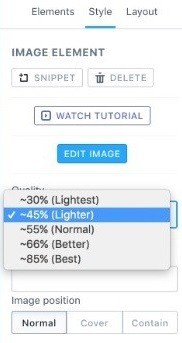
Lazy Loading
Again, load time is a very important SEO factor.
If there are images at the bottom of the page that the user can’t see without scrolling down, it doesn’t make any sense to load everything on the page at once. Instead, for the sake of better performance, you should set it up so that images aren’t loaded until the user is able to see them (this is the default setting for pages created with Shogun).
Meta Title and Descriptions
Search engines evaluate more than what the visitor can see on your page. For example, the meta title and description that are used for your listings on SERPs are analyzed by Google for indexing purposes, so you should definitely include your targeted keywords here.
Shogun makes it easy for you to access your meta title/description and add the appropriate SEO copy.
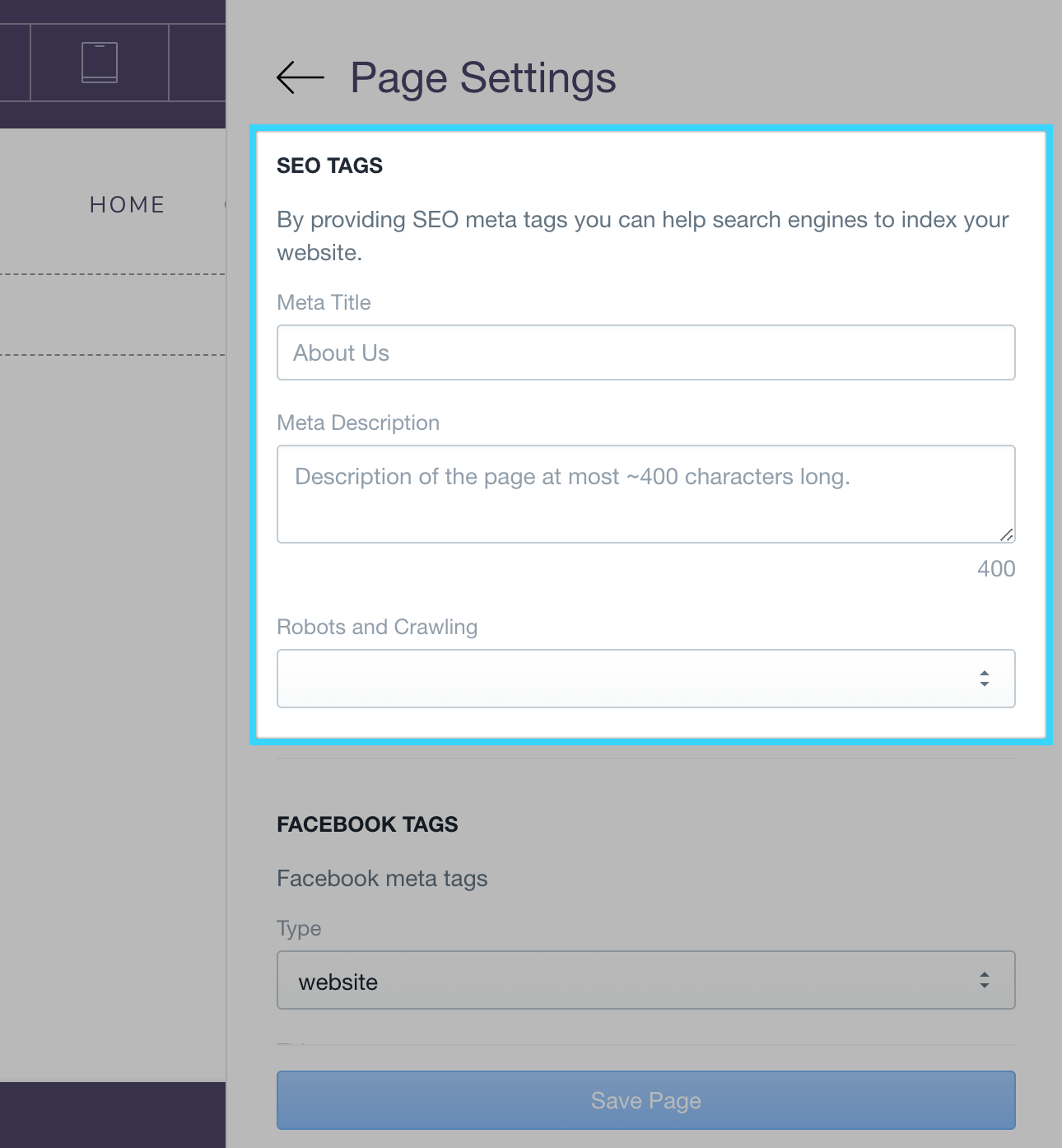
Additional Tips for Improving SEO
SEO isn’t a one-time task. It takes a lot of effort to get to the top of SERPs – and once you get to the top, it can take even more effort to stay there.
This is why there are many marketing professionals out there earning six-figure salaries for positions that are exclusively dedicated to SEO. By 2020, aggregate spending on SEO is expected to reach $79 billion.
You should have a blog on your store, as you’ll need to always be publishing new content in order to maintain your rankings. But you don’t necessarily need to hire a high-end marketing consultant to improve SEO. Following a few basic SEO best practices will make a big difference:
Insert Keywords into Headings
When Google is going through the process of indexing your site, they try to replicate the experience of a normal visitor.
The visitor, of course, will look to your page’s title and subheadings to figure out how relevant the page is to what they’re searching for. These headings are more prominent than the rest of the text on the page, so they naturally draw the visitor’s eye. Following this logic, Google places a lot of importance on the text in these areas. Your keywords must be included.
Insert Keywords into Image Titles and Alt Text
Images have a huge effect on user experience, but search engines don’t have eyes. The only way they can tell what your images are about is if you describe them in your image titles and alt text, and this provides you with another opportunity for adding your targeted keywords as well.
Insert Keywords into URLs
The URL of your page is an SEO factor that often gets overlooked. Never forget to add your primary keyword to the URL. Be careful about editing the URLs of existing pages, though, because that can break any backlinks you’ve established.
Link Building
Speaking of backlinks, this might just be the most important SEO factor of all.
Search engines want to ensure that their users are being directed to content that’s not just relevant to their searches, but also informative and well-written.
When another site links back to yours, search engines take this as an endorsement that your content is worth reading. As a result, you’ll be rewarded with a boost in your rankings.
How big a boost you get depends on who is linking back to you. A link from a small blog that no one’s ever heard of won’t make much of a difference, while a link from a major site like Wired or TechCrunch is SEO gold.
There are many sites with large followings that accept guest posts. Do some research into where you can submit guest posts in your industry (before you write anything up, always confirm that the site allows you to add a link to your store in the body text or author bio). This may take more effort than publishing a blog post on your own site, but it’s certainly worth it.
Submit Your Sitemap and Take Control of Your Position on SERPs
It’s impossible to overstate the importance of SEO. If you’re not able to maintain a high position on relevant SERPs, there’s a good chance that your store won’t succeed.
This is all within your control. By submitting your BigCommerce sitemap and utilizing other SEO best practices, you can increase your online visibility and attract more visitors to your store.
#cta-visual-fe#<cta-title>Fast and Flexible CMS For BigCommerce<cta-title>Gain full control over your site without sacrificing page speed with Shogun Frontend.Learn more

Adam Ritchie
Adam Ritchie is a writer based in Silver Spring, Maryland. He writes about ecommerce trends and best practices for Shogun. His previous clients include Groupon, Clutch and New Theory.



